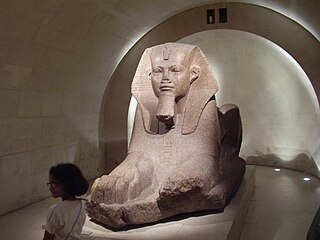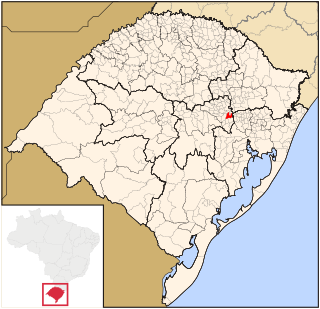 W
WTourism is travel for pleasure or business; also the theory and practice of touring, the business of attracting, accommodating, and entertaining tourists, and the business of operating tours. The World Tourism Organization defines tourism more generally, in terms which go "beyond the common perception of tourism as being limited to holiday activity only", as people "traveling to and staying in places outside their usual environment for not more than one consecutive year for leisure and not less than 24 hours, business and other purposes". Tourism can be domestic or international, and international tourism has both incoming and outgoing implications on a country's balance of payments.
 W
WBatara Kresna Railbus is a railbus service in Central Java, Indonesia that operates on the Purwosari – Wonogiri route. It is operated by PT Kereta Api Indonesia (KAI) and is a cooperation project between the Surakarta city government and KAI, when Surakarta City was led by Joko Widodo. The railbus is the second of its kind in Indonesia after Kertalaya railbus in South Sumatra.
 W
WBimal Nag is a hill station situated on a large meadow in the Saroor region of Drabshalla tehsil in Kishtwar district in the Indian union territory of Jammu and Kashmir. The area is coverd in pine. Water has collected from a nearby natural spring to form a small pond in front of the Bimal Nag Temple, a Hindu temple on the west side of the meadows called Bimal Nag. In 2013, roads were constructed in the area in an effort to increase connectivity in the rural areas of India by the Ministry of Road Transport and Highways.
 W
WClaiborne County is a county located in the U.S. state of Tennessee. As of the 2010 census, the population was 32,213. Its county seat is Tazewell.
 W
WGringo Trails is a 2013 feature-length documentary film directed by anthropologist Pegi Vail of New York University. The film follows the positive and negative impacts of travel and tourism on numerous communities across the globe, including Thailand, Bolivia, Mali (Timbuktu) and Bhutan, documenting how communities thrive, adapt, or deteriorate in the face of mass tourism, "one of the most powerful globalizing forces of our time."
 W
WHeritage commodification is the process by which cultural themes and expressions come to be evaluated primarily in terms of their exchange value, specifically within the context of cultural tourism. These cultural expressions and aspects of heritage become "cultural goods"; transformed into commodities to be bought, sold and profited from in the heritage tourism industry. In the context of modern globalization, complex and often contradictory layers of meaning are produced in local societies, and the marketing of one's cultural expressions can degrade a particular culture while simultaneously assisting in its integration into the global economy. The repatriation of profits, or "leakage", that occurs with the influx of tourist capital into a heritage tourist site is a crucial part of any sustainable development that can be considered beneficial to local communities. Modern heritage tourism reproduces an economic dynamic that is dependent upon capital from tourists and corporations in creating sustained viability. Tourism is often directly tied to economic development, so many populations see globalization as providing increased access to vital medical services and important commodities.
 W
WInternational tourism refers to tourism that crosses national borders. Globalization has made tourism a popular global leisure activity. The World Tourism Organization defines tourists as people "traveling to and staying in places outside their usual environment for not more than one consecutive year for leisure, business and other purposes". The World Health Organization (WHO) estimates that up to 500,000 people are in flight at any one time.
 W
WOvertourism is the perceived congestion or overcrowding from an excess of tourists, resulting in conflicts with locals. The World Tourism Organization (UNWTO) defines overtourism as "the impact of tourism on a destination, or parts thereof, that excessively influences perceived quality of life of citizens and/or quality of visitor experiences in a negative way". This definition shows how overtourism can be observed both among locals, who view tourism as a disruptive factor that increasingly burdens daily life, as well as visitors, who may regard high numbers of tourists as a nuisance.
 W
WA souvenir spoon is a decorative spoon used as a memento of a place or to display as a 'trophy' of having been there. The spoons may be made from a number of different materials such as sterling silver, nickel, steel, and in some cases wood. They are often hung on a spoon rack and are typically ornamental, depicting sights, coat of arms, associated characters, etc. The year the spoon was made may be inscribed in the bowl, or on the back. The entire spoon, including the bowl, handle, and finial may be used to convey the theme. The first souvenir spoons in the United States were made in 1890 by Galt & Bros., Inc. of Washington D.C., featuring the profile of George Washington. Although the George Washington spoon was one of the most popular designs, relatively few made by Galt & Bro. remain in circulation. One year later, a souvenir Salem Witch spoon was made, and sold seven thousand copies. It was created by Daniel Low, a jeweler in Salem, Massachusetts, after he saw souvenir spoons on vacation in Germany. The Witch Spoon is given credit for starting the souvenir spoon hobby in the U.S.
 W
WTeutônia is a municipality in the state of Rio Grande do Sul, Brazil.
 W
WA tour operator typically combines tour and travel components to create a package holiday. They advertise and produce brochures to promote their products, holidays and itineraries.
 W
WA tourist sign, often referred to as a brown sign, is a traffic sign whose purpose is to direct visitors to tourist destinations, such as historic buildings, tourist regions, caravan or camp sites, picnic areas, sporting facilities or museums. By international convention brown signs with white lettering and white pictograms are often used for this purpose.
 W
WTouron is a derogatory term combining the words "Tourist" with "Moron" to describe any person who, while on vacation, commits an act of pure stupidity. The term is considered park ranger slang that describes how some tourists act when entering a national park. The phrase indicates an act of ignorance and is known to be used in different subcultures. It is also used to describe tourists in general when they are outside their normal "comfort zone".
 W
WTravel is the movement of people between distant geographical locations. Travel can be done by foot, bicycle, automobile, train, boat, bus, airplane, ship or other means, with or without luggage, and can be one way or round trip. Travel can also include relatively short stays between successive movements, as in the case of tourism.
 W
WTravelers' diarrhea (TD) is a stomach and intestinal infection. TD is defined as the passage of unformed stool while traveling. It may be accompanied by abdominal cramps, nausea, fever, and bloating. Occasionally bloody diarrhea may occur. Most travelers recover within four days with little or no treatment. About 10% of people may have symptoms for a week.
 W
WA welcome sign is a road sign at the border of a jurisdiction or region that introduces or welcomes visitors to the city/county/state/province/prefecture/canton/region. Examples of welcome signs can be found near political borders, such as when entering a state, province, county, city, or town, and they are increasingly found in neighborhoods and private communities. In European countries under the Schengen Agreement, a welcome sign may be found at borders between countries. Its purpose is partly informational, to inform drivers where they are, and partly for tourism, as it affords an opportunity to advertise features within the region to people who are entering it. A welcome sign is a type of town sign—a sign placed at the entrance to and exit from a city, town, or village. In many jurisdictions, the format of town signs is standardized; in some, welcome signs may be distinct from the legally mandated town sign.